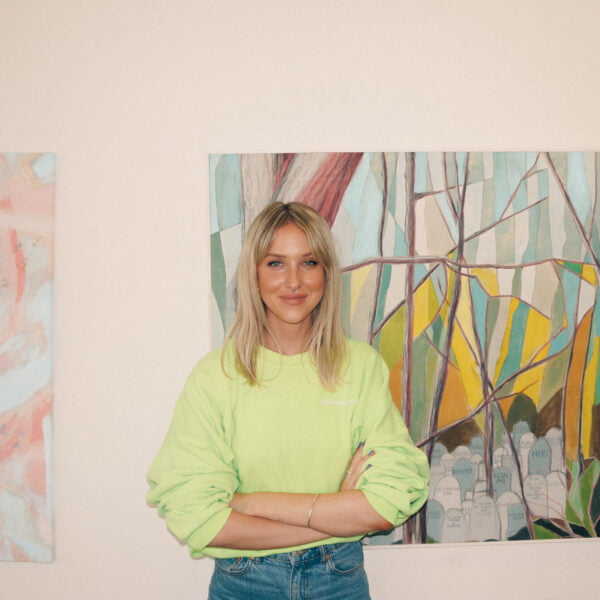
Natasha Collie
Senior Brand Marketing Manager at Penguin Random House UK
At the start of the year, Ladybird Books approached Sonder & Tell with a dream brief. In 2021, a year that’s been particularly challenging for...
In conversation with
Founder at Bonfire With Soul

“Dare to suck.” That’s what Duke Stump has learned in his long career in marketing, spanning the likes of Nike, lululemon and Lime.
Finding his feet at Nike in the 90s – as VP of Brand Marketing for 15 years – he then stepped in as EVP of Brand & Community for lululemon in 2014, when the world had lost trust in the brand. His solution? Going back to basics, being honest and launching a campaign that made the sales team “deeply uncomfortable”. We spoke to Duke about the power of a great story and why honesty and vulnerability beats perfection every time.
As a young kid growing up in the ‘70’s it was anything and everything Roald Dahl! As a teenager I became intoxicated with all things Vonnegut. As a young adult my fixation was Kerouac.
I am not sure “stories’ ‘ were always as important as was and is the concept of connection. As an introvert, I have always found immense value and joy in the simple act of connecting with friends, family, experiences and nature.
Discovering the nexus of story and connection came full-throttle for me when I joined NIKE in 1990 as an EKIN (NIKE spelled backwards). The entire role focused on storytelling and connecting with the community I was serving (Southern California). From that point forward I have embraced the power of story as a means to connect and build trust.


A great story connects. A great story lets you (the audience) see, feel and trust the narrative. A great story fosters a sense of imagination. A great story has the power and potential to make you feel something.
First and foremost, my lululemon adventure was an affirmation for what I believed in.
Perhaps Jay-Z said it best…”real recognise real.” Folks do not want perfection, they want honesty, vulnerability and for you to have the courage to stand tall for what you believe. That said our focus was on sharing what we viewed as real and to honour why we believed we mattered in the world.
I also believe you have to be courageous. If you stand for something then…stand for something! We are so afraid to offend or risk something (e.g. sales), so we play it safe. Who wants to live behind a mask? Unexpected possibility comes when we show up as our effortless selves.
My lululemon journey was like climbing Everest without oxygen and I loved it!. When I joined in the fall of 2014 it was listed as a brand that would not exist in 2015. The world had lost trust in the brand. So we simply went back to basics in terms of understanding why we mattered, what made us unique and we infused real and courage into everything we did. In fact, we launched a campaign called This Is Yoga that was inspired by our belief that what the world needed most was not doing yoga, but rather seeing and honouring what it meant to be yoga. As a result we felt it was important to take yoga off the mat and did a campaign that celebrated how yoga shows up in our everyday lives outside of a yoga studio.
So what did I learn? Dare to suck. Trust your team and creative partners. Find confidence in being you.
The thought of telling a story about taking yoga off the mat made some folks (sales leadership in particular) deeply uncomfortable. However, we (the brand team) had this unbridled belief that this was the path forward. So we launched the campaign, we evolved our Purpose statement, the brand subsequently took off and the rest is history. NOTE: You’ve got to have great product to have a great brand and we had this in spades.
“If you stand for something then...stand for something! We are so afraid to offend or risk something, so we play it safe. Who wants to live behind a mask?”
Just like nature, you have to adapt and evolve. As the world shifts, you need to be attuned and responsive. Whether it be new technologies, generational cultural shifts, global dynamics or the like. You simply have to be attuned to what is emerging.
That said, my overall philosophy remains the same along with the principles that guide my behaviour. I believe that the best brands are bonfires with soul. Folks are drawn to you, want to engage with you, defend you and even offer up honest criticism. Above all else there is an effortless loyalty because they trust you.
I utilize about 10 principles which draw inspiration from such “irreverent” sources such as nature, horsemanship, Buckminster Fuller, Krishnamurti and Buddhism.
I believe the top two goals of any CMO is (1) to clearly articulate to the world why your brand matters and (2) ensure your internal culture lives and breathes the vision and purpose of your brand in their every deliberation. To date at Lime, both are a work in progress.
(1) Amidst the sea of brands in our space, we are constantly asking ourselves what makes us unique and why do we matter? We are the leading micro-mobility provider in the world and yet, we are fully cognizant of the fact that this nascent modality (micro-mobility) and our brand are not always fully understood. For us, this is a great design challenge that is incredibly fun and loaded with possibility.
(2) Inspiring internal folks to see how vision and purpose is intrinsically linked to financial success is a challenge. Candidly, this is no different than many of the other places I have worked. It just takes empathy, patience and resilience.

Is it real? Is it relevant? Is it you?
In our obsession with data, metrics and growth, we are losing our connection to consciousness. Said another way, we have an ever growing blindspot around valuing emotion, intuition and soul. For example, Seinfeld would have never seen the light of day if not for a producer who emphatically pushed to green light the show even though the pilot received less than scintillating ratings (data).
The invisible hand that guided lululemon was the Community team. Hard to quantify their impact on a day to day basis, but the job they did cultivating relationships over time gave the brand trust and strength.
My concern is that we lose the art of building an emotional charged brand if we only default to science. That said I do not believe it is an either or proposition. Rather my sense is that we can optimise possibility by holding the two as intrinsically linked…art AND science working together to build something beautiful.
Lastly, we need to recognise that great brands usually have great cultures, so brand as a function needs to understand its role in lighting the fire within and cultivating a dynamic internal culture.
I believe the goal of any great brand is to stand for something meaningful and relevant in this world and to ultimately build effortless loyalty with those you serve.
Duke's Storylist

Senior Brand Marketing Manager at Penguin Random House UK
At the start of the year, Ladybird Books approached Sonder & Tell with a dream brief. In 2021, a year that’s been particularly challenging for...

Founder Of Simple Politics
Talking about serious issues doesn’t mean defaulting into a serious tone of voice, or using complicated language. If anything, accessibility, clarity and a touch of...

Brand & Community Manager at Homethings
Creating a tone of voice from scratch can be challenging. But a blank slate to work from also mean there’s room for something a bit...

Strategy Director at eatbigfish

Content Editor for Natoora